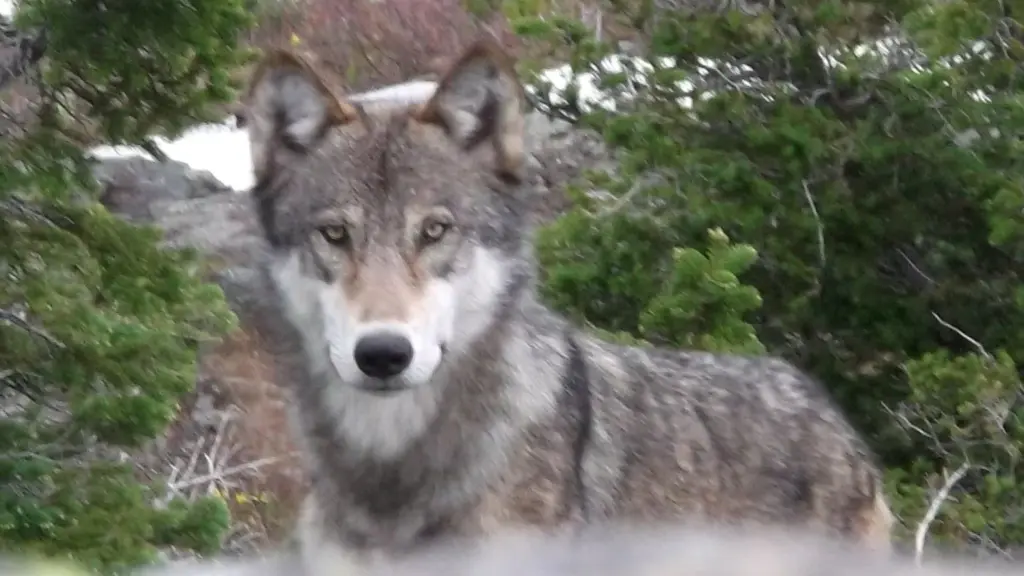BOISE, ID – As Idaho changes to a totally new method for counting wolves, officials with the Idaho Department of Fish and Game have increased the state’s 2023 wolf population estimate they reported publicly last year.
Officials increased the 2023 wolf population estimate by 85 wolves, an increase of about 7%, state officials confirmed.
The change comes as Idaho is seeking to reduce the number of wolves in the state and as some outside researchers have stressed the importance of an accurate wolf count.
During the July 2024 Idaho Fish and Game Commission meeting, state officials estimated Idaho’s 2023 wolf population at 1,150 wolves as of Aug. 1.
But during an interview Wednesday at the Idaho Department of Fish and Game’s Boise headquarters, Wildlife Bureau Chief Shane Roberts and Wildlife Research Manager Matt Mumma told the Idaho Capital Sun officials are no longer using the 1,150 estimate.
Instead, they have increased the Aug. 1, 2023 wolf population estimate to 1,235 wolves.
The change was made after Idaho Department of Fish and Game officials added four additional measurements to the new method the state uses to estimate the wolf population, Roberts and Mumma said.
“The new estimates are better and more accurate than the other ones, which were likely slightly off,” Mumma said Thursday.
“Through simulation, we determined that the addition of these metrics improved the accuracy of the model,” Mumma added.
Jeff Abrams, a wildlife program associate for the Idaho Conservation League, said the state should be as precise and transparent as possible in its wolf estimates and use conservative figures for the number of nonbreeding wolves and the amount of lone wolves used in statistical models.
“Generally, we believe they should be more conservative – based on research previously cited in (the department’s) own wolf management plan,” Abrams said. “We believe folks should take a closer look at fundamental assumptions the agency is feeding into their new model.”
Roberts said the state’s new model for estimating wolves uses a wide range of options and does not rely on static assumptions.
Even with the revision, Mumma said the state’s numbers are still well within a 95% credible interval and Roberts said the larger overall population trends reported since 2019 have not changed.
“The overall trend since 2019 is down, but in the last three years of estimates, it’s fairly stable,” Roberts said.
Idaho Department of Fish and Game officials provided the revised 2023 wolf population estimate after the Idaho Capital Sun requested follow up information about changes to the new wolf population estimation method on July 18.
Officials estimate the wolf population in Idaho because wolves are too elusive and Idaho is too rugged and remote for the state officials to physically count every wolf.
Overall, the state says the wolf population is on a downward trend from 2019-2020, when more than 1,600 wolves were estimated. Last year, Idaho’s wolf population decreased by almost 100 wolves from 2023 to 2024, state officials said earlier this month.
Idaho officials also recently changed date they report the wolf population estimates
The change in metrics is part of a much larger overhaul of how Idaho counts its wolf population. From 2019 to 2023, the state used trail cameras to estimate Idaho’s wolf population.
Then in July 2024, Roberts announced the state switched to a new method that uses age and genetic data taken from a tooth from every dead wolf checked by the Idaho Department of Fish and Game each year. State officials call the new method the ABC method, short for Approximate Bayesian Computation.
After switching from trail cams to age and genetic data from teeth, the state also switched when it reported Idaho’s wolf population estimates.
For years, Idaho reported its wolf population as of Aug. 1.
But last week when Idaho Department of Fish and Game officials presented the 2024 wolf population estimate, they switched the reporting date to May, the Sun previously reported.
The change makes a difference because of wolf population dynamics. The new May numbers are likely to show higher wolf populations than the previous August estimates.
For example, the state’s ABC method estimated the 2024 wolf population higher in May, at 1,235, but lower in August, when it was projected to be 1,140, according to data provided by the Idaho Department of Fish and Game.
The new May estimate sets the state’s wolf official population estimate at its highest point in the year, right after when the new pups are born in the spring. Throughout the rest of the year, the wolf population declines as wolves are killed by hunters and die of natural causes until the population reaches a low point in the spring just before new pups are born. That means a population estimate tied to May — when the state’s new wolf population data is reported — would always be expected to be higher than a population estimate tied to August, which was when the state’s previous estimate was based on.
Roberts said he understands moving the date from August to May may cause some confusion, but he said state officials moved the date to May because they believe the new ABC method is most accurate right after pups are born because one of the factors the ABC model estimates is new litters.
On the other hand, Roberts said the state believed the old Aug. 1 date was the most accurate date to use for trail cams because state officials actually deployed the cameras during the months of July and August.
Moving forward, Idaho Department of Fish and Game officials submitted their new ABC method for consideration for publication in a peer-reviewed journal. Roberts told the Sun Idaho that the Idaho Department of Fish and Game plans to consistently use the May numbers going forward.
Idaho seeks to reduce the wolf state’s wolf population
These changes to how Idaho counts its wolves are happening as Idaho is in the middle of a six-year plan to reduce the state’s wolf population by more than 60%. The 2023-2028 Idaho Gray Wolf Management Plan calls for reducing Idaho’s wolf population down to an average of about 500 wolves, with a low of about 350 wolves, driven largely by human hunting of wolves.
Some outside researchers have questioned the state’s previous trail cam wolf population methods and told the Idaho Capital Sun the accuracy of Idaho’s wolf population is extremely important as Idaho reduces its wolf population.
Abrams, a wildlife program associate with Idaho Conservation League, said Thursday he supports the Idaho Department of Fish and Game, which is commonly referred to as IDFG, switching away from trail cameras and trying to improve the way the state estimates wolf populations.
“It’s helpful that IDFG wants to improve the way they estimate wolf abundance,” Abrams said. “This is something (the Idaho Conservation League) and many others have encouraged the agency to do in the past. Idahoans want wolves to be managed responsibly and not have populations jeopardized. It benefits everyone to have accurate estimates of how many wolves we have. It’s important that the public has trust in this process.”
Abrams said he is happy the state is submitting its new ABC method to a peer-reviewed journal. But Abrams said the state should be as precise and transparent as it can be in how it estimates the wolf population.
“However, we do still have some questions on basic assumptions used in the new model about pack size,” Abrams said.
Abrams also called for the Idaho Department of FIsh and Game to resume publishing wolf reports every year that include detailed data about wolf population characteristics, harvest and hunting data, livestock depredation and more. Abrams said he hasn’t seen the state release a detailed annual wolf report of this kind since the 2016 Idaho Wolf Management Report.
“The department could make another improvement by getting back to publishing an annual wolf report, so the public understands how close IDFG may be getting toward their management target,” Abrams said. “They haven’t done this in almost 10 years.”
Abrams said he is concerned about how close the state could be getting each year to its wolf population management goal and he wonders what the mid-winter population low-points are for wolves. Abrams said the new May population estimate the state releases doesn’t provide that information to the public because the May estimate reports Idaho’s wolf population at its highest point each year, right after pups are born in the spring.
“The (Idaho Fish and Game) Commission itself also said just last year, the agency needs to be careful about overshooting their management goal,” Abrams said.
Roberts said the reason the Idaho Department of Fish and Game switched to the new ABC method is because they want to be as accurate as possible and realized the old trail cam method would be less accurate as the number of wolves decreased.
“Part of the reason, as we mentioned in last year’s presentation, that we switched methods to the ABC is because our own research suggested that the camera method was going to become less reliable as we were able to get fewer pictures of wolves,” Roberts said. “So that was a big impetus for the switch.”
This story first appeared on Idaho Capital Sun.





